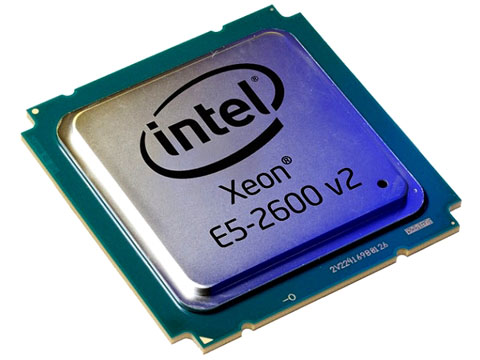
The new 12 core Intel Xeon E5-2697 v2 should slash render times in ray tracing software like Luxion KeyShot. Model Credit: Christian (grabcad.com/christian-49)
With the launch of the Intel Xeon E5-2600 v2 processor family this week, now is a good time to be looking at workstations.
All the major vendors have just introduced new models, from mid-range single processor to high-end dual processor machines. But what does the new chip family mean for CAD/CAM/CAE?
The Intel Xeon E5-2600 v2 CPU is based on Intel’s Ivy Bridge-EP architecture, a replacement for the original Xeon E5-2600 Sandy Bridge-EP chip, which was introduced at the tail end of 2011.
Those familiar with Intel chip architectures will know that Ivy Bridge-EP is a so-called tick in its tick-tock development cycle. This means it’s an evolution, rather than a revolution, but there are some important new features.
The E5-2600 v2 includes a DDR3 memory speed upgrade to 1,866MHz (up from 1,600MHz) and better performance per watt, thanks to a new 22nm manufacturing process (down from 32nm).
GHz for GHz we expect the new Xeon E5-2600 v2 to offer a small improvement over the original Xeon E5-2600. But Intel has also upped the clock speeds, which is particularly important for CAD, but also for CAM, CAE and rendering.
For example, Intel’s new flagship workstation chip, the Xeon E5-2687W v2 (3.4GHz) (8 core), is a whole 0.3GHz faster than the Xeon E5-2687W (3.1GHz) (8 core) that it replaces, so if you have the money (£1,300 per CPU) it should give a decent boost.
There has also been an increase in the number of cores, which will be welcomed with open arms by users of multi-threaded ray trace rendering software and simulation. While the original Xeon E5-2600 family peaked at 8 cores, the Xeon E5-2600 v2 offers 10 or 12 cores per chip, in addition to the familiar 4, 6 or 8.
The trade off for an increase in cores is a slight reduction in GHz. The 10 core Xeon E5-2600 v2 models range from 2.0GHz to 3.0GHz, while the 12 core chips come in at 2.4GHz or 2.7GHz. It will be interesting to see where the sweet spot appears for users of ray trace rendering software, taking into account GHz, # cores and price.

Multiple choice: The Xeon E5-2600 v2 is available in 4, 6, 8, 10 or 12 CPU cores
The Xeon E5-2600 v2 is predominantly designed for dual processor machines (e.g. HP Z820, Dell Precision T7610, Lenovo ThinkStation D30, Fujitsu Celsius R930) but it can also be found in single socket workstations (e.g. HP Z420, Dell Precision T3610, Lenovo ThinkStation S30, Fujitsu Celsius M730). Intel has also launched a dedicated single socket processor, the Intel E5-1600 v2, available in 4 or 6 cores up to 3.7GHz.
Finally, it is important to note that both the Intel E5-1600 v2 and Intel E5-2600 v2 are a whole generation behind Intel ‘Haswell’, which was introduced at the beginning of the summer. ‘Haswell’ is currently available in mobile and entry-level desktop workstations as fourth generation Core (i3, i5 and i7) and Xeon E3-1200 v3 chips.
GHz for GHz, we expect the Haswell-based Xeon E3-1200 v3 to perform better than the new Intel E5-1600 v2 or E5-2600 v2 processors, so if you are in the market for a single processor workstation for CAD you may want to check out the HP Z230, Lenovo ThinkStation E32, Dell Precision T1700, and Fujitsu W530.






